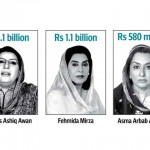Many people hate the phrase “Web 2.0” even more than they hate what they believe it represents. No, that’s not quite right… many people hate the phrase precisely because they think it represents nothing. Or they’re annoyed by the idea of a web version number. Or they think it’s “elitist.” Or they’re convinced it’s so much marketing hype. But what if it’s not an empty phrase? What if it’s simply a way of representing a concept that some people DO understand? What if it’s like so many other domain-specific terms that sound like nonsense to everyone else?
That doesn’t mean zillions of people haven’t abused the term for everything. it doesn’t mean that there’s all that much consensus even among those who think they DO know what “Web 2.0” means. But to say it means nothing (or WORSE–to say it’s just a marketing label) is to mistake jargon (good) for buzzwords (bad). Where buzzwords are used to impress or mislead, jargon is used to communicate more efficiently and interestingly with others who share a similar level of knowledge and skills in a specific area.
The notion of “Web 2.0” started with a conference brainstorming session between O’Reilly and MediaLive International. Wikipedia defines web 2.0 in these words:
“Web 2.0 is a term often applied to a perceived ongoing transition of the World Wide Web from a collection of websites to a full-fledged computing platform serving web applications to end users. Ultimately Web 2.0 services are expected to replace desktop computing applications for many purposes.”







